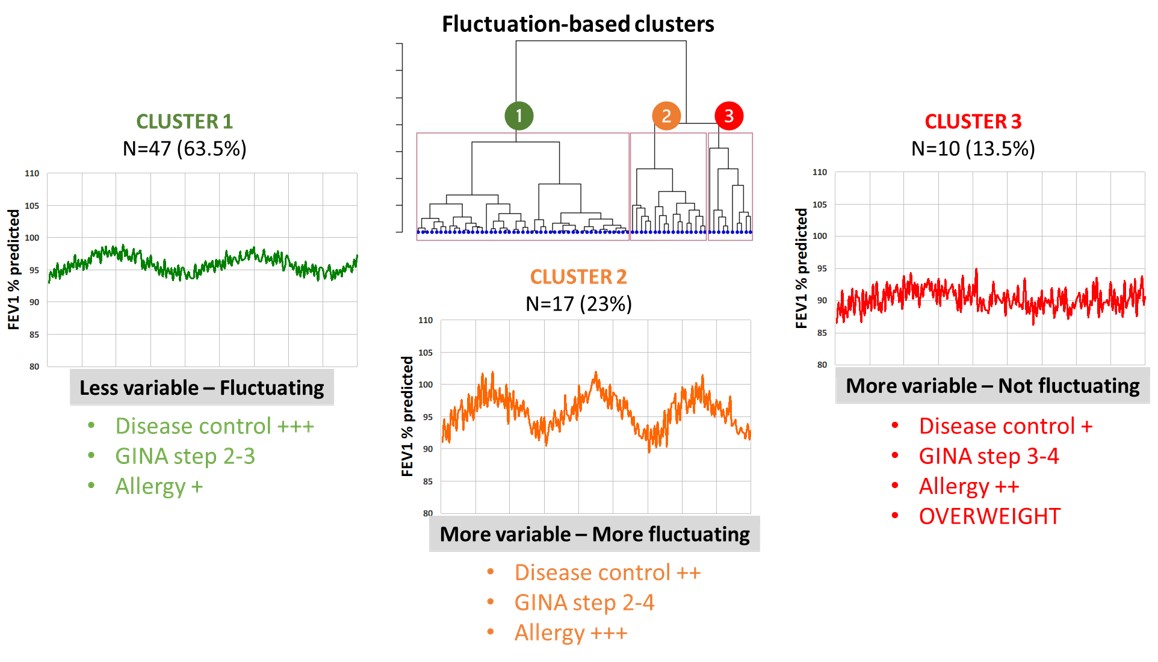Abstract
Background: Children with asthma present fluctuations in lung function that reflect the stability of airway tone and the level of disease control.
Objective: To examine whether subgrouping of asthmatic children according to patterns of FEV1 fluctuation allows for the identification of distinct clinical phenotypes.
Methods: In the context of lung function variability study (NCT04163146), fluctuation-based clustering (Delgado-Eckert E, Thorax 2018) was applied to twice-daily FEV1 measurements recorded over a period of 3 months in 74 children with mild-to-moderate asthma.
Results: Three clusters were identified (Figure): 1) Cluster 1 (63.5% of children) with decreased short-term variability and moderate long-term FEV1 fluctuation; it consisted of children with less allergy and excellent asthma control. 2) Cluster 2 (23%) with increased short-term variability and marked long-term FEV1 fluctuation; it comprised mostly allergic children who required more intensified treatment to maintain disease control. 3) Cluster 3 (13.5%) with increased short-term variability but minimal long-term FEV1 fluctuation; it consisted mostly of overweight and allergic children who despite the escalating medication maintained marginal level of disease control.
Conclusions: Patient phenotyping according to FEV1 fluctuations may identify asthmatic children who could benefit from closer monitoring and specific treatment strategies.
